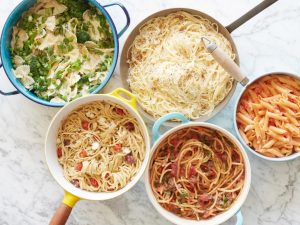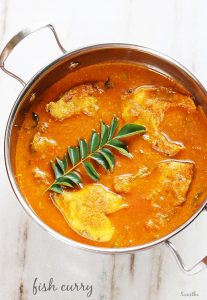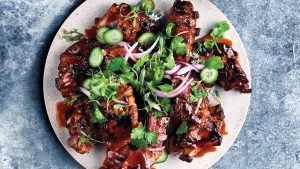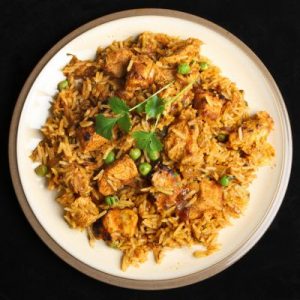An Analysis of Food as a Powerful Tool that Brings the World Together in the Context of the Noodle
People around the world share a common need that exists despite differences in race, religion, ethnicity, and gender. That need is for food. It is perhaps a one of the greatest equalizers in the world. Many different cuisines exist based on global location and resources, but they take hints from each other. Chefs are influenced by dishes they have tried from different cuisines and subsequently try to incorporate some aspects into their own dishes. This sharing and appreciation for differences is what makes food such a great equalizer. It provides an avenue for people to exchange and share ideas while learning and growing together. One such dish that perfectly exemplifies this is the noodle. With origins in both China and Italy, this item has become a global phenomenon to the point where so many different shapes, sizes, sauces, flavors, and smells exist. With so many different countries having their own renditions, noodles have come to represent humanity as whole, showcasing that while superficial differences exist, they are all still noodles. Food is reflective of the people that prepare and enjoy it and when so many people enjoy and prepare variations of the same dish, it can be said that it reflects a similarity in all of them. The noodle is a unique dish that has the power to blend all sorts of different flavors into one unique experience, and just as with flavors, noodle dishes from around the world bring people together regardless of their differences because like different noodle dishes, in the end at our core people are all the same.
To truly appreciate and understand the noodle and its power to enact change it is helpful to understand it origins and first steps of expansion. Some of the earliest mentions of the noodle in China goes back to the Han dynasty which existed from approximately 206 BC – 220 AD. The first mentions of the dish actually called it a “cake” of sorts. This early definition is just one illustration of how the noodle has grown and changed drastically over time. After the Han dynasty, the Wei, Jin, Southern, and Northern dynasties innovated even more noodle types from the original cake form. The new forms of noodles were called the Shui Yin and Bo Tuo styles. For further context, the shui yin was described as, “flat noodles shaped like a leek leaf cooking in a pot with boiling water” (Zhang, 2016). This style represented some of the first variations from the original noodle style and was just the beginning of the worldwide expansion that took place. The Sui, Tang, and Five dynasties continued the trend and introduced even more types. The noodle continued to grow and expand over time across China to a stage where each region had its own signature type of noodle. This is extensively detailed in the article, Noodle, Traditionally and Today, as the author provides an extensive list showcasing the many different types:
“In East China, there are Shanghai noodles in superior soup, Nanjing small boiled noodles, Hangzhou Pian Er Chuan noodles with preserved vegetable, sliced Pork, and bamboo shoots in soup, … In Southern China, there are Guangzhou wonton noodles. In Central China, there are Wuhan hot noodles with sesame paste. In North China, there are Beijing fried bean sauce noodles… In Northwest China, there are Xinjiang pulled noodles, Shanxi oil-splashing noodles…” (Zhang, 2016)
This is just an excerpt of the very extensive list that if fully included would take up the whole page. That level of variety shows how the noodle became a staple in many different regions because of its ability to be incorporated in with the local resources and customs. What makes the noodle so unique is its ability to adapt across so many different regions in China, and more importantly, beyond China.
Noodles continued to span across Asia and the rest of the world, tying together different cultures with an appreciation for a common dish. In her book, On the Noodle Road: from Beijing to Rome, with Love and Pasta, the author Jun Lin-Liu discusses noodles in different countries along the original silk road. In one portion, she mentions a dish that seems to be popular from China through central Asia, “In the northwestern region of China and Central Asia, Uighurs and Uzbeks make a dish called manta, steamed dumplings filled with mutton and pumpkin and served with cream” (Lin-Liu, 2013). This dish, manta, is based off of a dumpling which is a classic Chinese dish, so the influence can be clearly seen. However, the author goes on to detail how the dish changes as different regional influences are added, “In Turkey, the dish evolves into manti, tiny tortellini-like dumplings that are boiled and served with yogurt, mint-infused oil, paprika, and crushed walnuts” (Lin-Liu, 2013). From the description, it is clear this similar dish, manti, is based off the original dumpling while also incorporating some Italian influences, which led to the “tortellini” shape. The Italian influence that is present is very important as it illustrates the expansive presence that noodles have. This connection across Europe and Asia ties the many different cultures across the two together.
So far, the focus has primarily been on China and how their noodles connect to other cultures, but it is also important to consider the other main origin of the noodle, Italy. According to studies, the noodle can be traced far back to the Etruscan times in ancient Italy. Sometimes it is said that Marco Polo discovered them in his travels but that has been shown to be more of a re-discovery of the dish. Italian pasta is famous across the world and is a staple in many different households. There are so many different pasta shapes and sauces that have all been carefully crafted for a specific purpose and to make the dishes the best they can be. An interesting point about all these different shapes and such is that they are not unique to just Italy. In her book, Lin-Liu continues discussing the relationship between Chinese and Italian noodles stating, “Chinese “cat’s ear” noodles resembled Italian orecchiette. Hand pulled noodles, a specialty of China’s north west, were stretched thin as angel hair. Dumplings and wontons were folded in ways similar to ravioli and tortellini. Even the more obscure shaped of Italian pasta…had their Italian counterparts” (Lin-Liu, 2013). This resemblance between the two cultures is very important as it showcases a direct link between two seemingly different cultures. This link illustrates how theses cultures that admittedly are very different, still share some very important connections. The connections show that the two cultures have more than just a common food preference and that they both understand things like the nutritional value of noodles and pasta and how they are perfect dishes for tying together many flavors. Furthermore, it was noted that, “Italians, like Chinese, drank liquor infused with other ingredients in order to relieve everyday ailments” (Lin-Liu, 2013). All these connections illustrate an important fact and that is that the people of these cultures are more similar to each other than expected. Enjoying the same food is one thing, but expanding it and perfecting it to the degree that these two cultures have, showcases a different level of similarity in commitment. Food is representative of the culture behind it, therefore it stands to be reasoned that when two cultures have such similarities in their food choices, the reflected cultures have the same similarities.
All across the world from Asia to South America, unique noodles dishes can be found that reflect the culture and resources of the people in the area. The power of Italian and Chinese cuisine to be taken and adapted to cuisines around the world is what truly sets them apart. In an article from Condé Nast traveler, Around the World in 12 Noodle Dishes – From Ramen to Saimin, the author, Mary Holland, discusses and illustrates the wide variability of the noodle. She introduces the article stating, “A dish can tell you so much about a place. It’s more of an experience than just a meal – it’s an entry point into a culture…” (Holland, 2015). It is this sentiment that drives this analysis of food as a method of measuring similarity between different peoples. She goes on to introduce different noodle dishes from around the world starting with Pho, a Vietnamese dish featuring long and thin rice noodles in a broth with spices and topped with various vegetables. This dish is a staple in Vietnamese cuisine and is believed to have originated as a mix between French and Chinese dishes. Similarly, Saimin was originally a Chinese dish, but it became what it is known as today in Hawaii from a mix of Chinese and Japanese immigrants. It features egg noodles, a broth, and several other vegetables. Dishes like these are just a few examples of how noodles have spread across the world. What is perhaps more interesting is how noodles have spread to countries that one would not expect, like Iran and Peru. In Iran, there is a popular dish called Ash Reshteh. This dish is described as, “linguine-shaped reshteh noodles, khask (Persian whey) and a variety of wholesome ingredients including spinach, lentils, chick peas, turmeric, and parsley, this vegetarian soup is brimming with flavor” (Holland, 2015). The connection to other countries is undeniable as this dish has a symbolic value similar to Chinese culture in that it is considered to be associated with good luck and is eaten around the New Year. The belief in the power of noodles reflects on the Persian culture behind the dish and reveals its unexpected similarities with Chinese culture. Peru also features similar connections to Chinese culture. In Peru, there is a whole segment of cuisine called Chifa which is a mix between Cantonese and Peruvian cuisines. Within this unique segment, there is a dish called Tallarin Saltado which is often described as, “fried noodle dish made from linguine or linguine-shaped noodles… tomatoes, onion, garlic, ginger, green onion, cilantro and beef, all stir fried in a piping hot pan” (Holland, 2015). Given the roots of this dish in Cantonese and Peruvian cuisine, there is clearly a link between the two cultures. This time the link spans the Pacific Ocean and reflects that despite the distance that the cultures are still linked. These different twists on the same dish illustrate the wide-spanning reach of the noodle across the world. These different interpretations encourage the sharing of styles and methods of cooking and thus cultural ways. Cultures and cuisines vary, but regardless of form the noodle is a constant that reflects that there are more similarities than expected between different people.
One of the earliest instances of food bringing different peoples together is a holiday that many Americans celebrate every year, Thanksgiving. While this holiday does not feature Chinese or Italian cultures, it is still a very important illustration of the power of food as a connector. This famous feast featured the Pilgrims and Wampanoag Indians sharing food to celebrate a successful harvest. This interaction brought two completely different cultures together through a mutual love for food. This is just one example of the phenomenon and up until his recent tragic death, Anthony Bourdain, was a strong advocate for the power of food and connecting people. In season 8 episode 1 of his show, Parts Unknown, Bourdain shared noodles with President Barack Obama at a small noodle restaurant in Hanoi, Vietnam. They each enjoyed some classical Vietnamese Bun Cha, which features rice noodles with pork and other delicious garnishes. In their conversation, Bourdain spoke about exploring the world and stated, “The extent to how you can see other people live seems useful at worst, and incredibly pleasurable and interesting at best”. This statement of encouragement to explore the world resonated with many. Bourdain spent his own life exploring the world through food as it is one of the best ways to understand the culture behind it. He would dine at the small family owned establishments that were close to the roots of the country and get a true feeling for the reflected culture. He did perhaps the best job of illustrating the power of food to reflect the cultural DNA of a country and how that DNA was more connected than one might expect. Running with that point President Obama then stated, “It confirms the basic truth that people everywhere are pretty much the same, the same hopes and dreams…”. This statement from a very influential figure of the modern era supports the sentiment that noodles are truly representative of people. Noodles come in all sorts of different shapes and sizes but in the end, they are all still noodles. This may seem like a stretch to connect humanity and noodles but the ability of noodles to reflect differences and similarities in various cultures truly draws the two together. In a separate instance Bourdain stated, “If I’m an advocate for anything, it’s to move. As far as you can, as much as you can. Across the ocean, or simply across the river. Walk in someone else’s shoes or at least eat their food. It’s a plus for everybody”. Food has an uncanny ability to draw people together. Trying new and exotic foods often seems daunting to some people, but when a dish has a sense of familiarity, it eases the transition. Noodles do just that, as they have a familiar sense for many people that draws them in along with a new twist to introduce them to the new culture. This allows people to take a step into a new world and share and enjoy which as Bourdain said is, “a plus for everybody”.
This idea of using noodles to bring people together all comes down to people sharing food. Sharing food allows people to share their cultural differences. It is the avenue by which information is passed in all sorts of settings. In a National Geographic article titled, The Joy of Food, the author states, “Food is more than survival. With it we make friends, court lovers, and count our blessings” (Pope). This sentiment is not unique. It is not something that people often think about, but instead do inherently because it is so tightly engrained in the cultural DNA. Business meetings, dates, family gatherings, and even work is planned around food without a second thought given to it. This level of inclusion is no mistake but rather an appreciation for the concept that keeps the world running. That may seem like a grand statement but recent highly important political meetings have been supported with food. Regardless of political opinion, it can be stated that the recent meeting between President Donald Trump and North Korean leader Kim Jong Un was a landmark political event. The summit featured an elegant use of food as both leaders and their delegations enjoyed dishes native to both countries. While this may seem like a small gesture, it was symbolic of the two countries coming together and provides yet another example of food being used to connect the world. This is no modern concept either, as the same National Geographic article from above also states that, “The sharing of food has always been part of the human story. From Quesem Cave near Tel Aviv come evidence of ancient meals prepared at a 300,000-year-old hearth, the oldest ever found, where diners gathered to eat together” (Pope). This piece of evidence further supports the claim that sharing food is a part of human DNA. Given that the same practice has been going for at least 300,000 years, it provides almost irrefutable evidence that sharing food is a part of being human. It is a quintessential trait that links all humans and encourages all to find the common connection between each other. By eating together people share stories, and learn about others who may be similar or very different from themselves.
People around the world are brought together by food. The noodle is a prime example that metaphorically illustrates the bringing together of people through different flavors that are tied together. The term noodle is viewed in many different ways around the world, but in the end, they all share the same core, which shows that humans are the same despite surface differences. By sharing food, people are able to learn about each other and the different cultures reflected by different dishes. Food is a very personal tool that can be used to share and connect with others, thus creating an environment of shared differences. Understanding and appreciating different cultures is very important to coexistence as it mitigates misunderstandings that lead to conflicts. It seems odd to attribute a large phenomenon like coexistence between cultures to the noodle, but its adaptability and ability to reflect the cultures highlights similarities that are not often initially apparent. Whether it’s a high stakes political summit or just some friends at a potluck, noodles tie together flavors and people, bringing everyone a little closer together.
Works Cited
Bourdain, Anthony, director. Anthony Bourdain: Parts Unknown. Netflix Official Site, 16 June 2018, www.netflix.com/browse?jbv=70304979.
Daniels, Shannon. “The Place Where Lost Things Go.” Girlswritenow, 23 Dec. 2011, www.girlswritenow.org/workshops/food-memoir/.
Holland, Mary. “12 Of the World’s Most Incredible Noodle Dishes-From Ramen to Saimin.” Condé Nast Traveler, Condé Nast Traveler, 9 Nov. 2015, www.cntraveler.com/galleries/2015-11-09/around-the-world-in-12-noodle-dishes-from-ramen-to-saimin.
Lin-Liu, Jen. On the Noodle Road: from Beijing to Rome, with Love and Pasta. Riverhead Books, 2014.
Pope, Victoria. “Joy of Food.” National Geographic, www.nationalgeographic.com/foodfeatures/joy-of-food/.
Plimoth Plantation. “Plimoth Plantation.” Thanksgiving History | Plimoth Plantation, www.plimoth.org/learn/just-kids/homework-help/thanksgiving/thanksgiving-history.
Sietsema, Tom. “The Culinary Diplomacy of the Trump-Kim Summit Lunch Menu.” The Washington Post, WP Company, 12 June 2018, www.washingtonpost.com/lifestyle/food/trump-and-kims-lunch-menu-showed-off-some-culinary-diplomacy/2018/06/12/53e8d3bc-6e49-11e8-bf86-a2351b5ece99_story.html?noredirect=on.
Zhang, Na, and Guansheng Ma. “Noodles, Traditionally and Today.” Journal of Ethnic Foods, vol. 3, no. 3, 2016, pp. 209–212., doi:10.1016/j.jef.2016.08.003.






